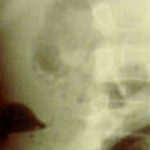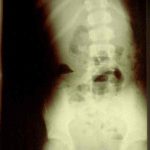Ten months ago I wrote about getting patients off backboards as soon as possible. The question has arisen again, so I did a little digging to find some good science behind this. And I found it.
This problem has been looked at three ways. From best to worst they are: studies on OR patients who developed pressure ulcers postop, studies on animals, and studies on tissues. I’ll focus on the first because a real person who is chemically and physically restrained to an OR table is very similar to one who has been fastened to a backboard.
The most cited study (retrospective, of course) showed that patients who had tissue pressure over bony prominences that exceeded their diastolic pressure developed pressure ulcers within 6 hours, and even faster with higher tissue pressures. But even better prospective OR studies have been done, and these showed that ulcers could occur in as little as three hours.
Keep in mind that these studies involved patients in whom real efforts were made to pad bony prominences and actively avoid tissue injuries. Yet they still occurred. Contrast this with a patient who is strapped to a hard backboard in your ED, with little ability to adjust their position to improve circulation.
Related work has shown that:
- Tissue injury is more likely in the elderly, probably because they have less adipose padding
- Obesity is not protective! The increased weight increases tissue pressure out of proportion to the padding effect
- A harder surface shortens the time to tissue damage
- Hypotension is bad, both for the patient’s well-being and for the skin over their bony prominences
Bottom line: Get your patients off that backboard ASAP! I recommend sliding it out when they are logrolled to examine the back. The board is of little or no benefit to spine stability in a cooperative patient. And we have ways of encouraging cooperation if they are not.
Related post:
Reference: How Much Time Does it Take to Get a Pressure Ulcer? Integrated Evidence from Human, Animal, and In Vitro Studies. Ostomy Wound Management. 54(10):26-8, 30-5, 2008.


